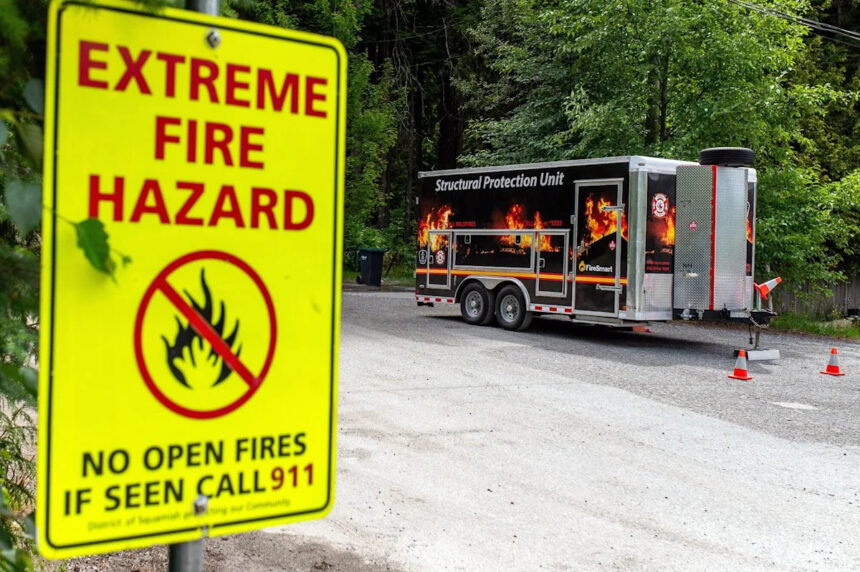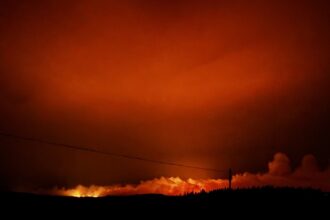The acrid haze hanging over North American skies has become an unwelcome harbinger of summer for millions of citizens. As Canada experiences its second consecutive record-breaking wildfire season, the resulting smoke plumes are creating a public health crisis that transcends borders, affecting communities thousands of kilometers from the flames themselves.
“We’re witnessing the normalization of an environmental emergency,” says Dr. Sarah Henderson, scientific director at the British Columbia Centre for Disease Control. “These aren’t isolated incidents anymore—they’re becoming a seasonal reality that our healthcare systems must prepare for.”
The microscopic particles suspended in wildfire smoke—particularly those smaller than 2.5 micrometers (PM2.5)—pose the greatest concern to respiratory and cardiovascular health. These particles can penetrate deep into lung tissue and even enter the bloodstream, triggering inflammatory responses throughout the body. Research published in the Canadian Medical Association Journal indicates that emergency room visits for respiratory complaints increase by 4-10% during severe smoke events, with vulnerable populations experiencing disproportionate impacts.
Children, the elderly, pregnant women, and individuals with pre-existing conditions face elevated risks. A Harvard University study following the 2021 wildfire season documented a 42% increase in asthma attacks among pediatric patients in smoke-affected regions, while cardiovascular emergencies rose by nearly 10% among adults over 65.
The economic toll compounds the human suffering. The Canadian Institute for Climate Choices estimates that healthcare costs related to wildfire smoke exposure now exceed $4.3 billion annually, a figure that doesn’t account for lost productivity or long-term health consequences. American jurisdictions experiencing Canadian smoke drift report similar economic impacts, with New York State estimating $800 million in health-related costs during a single two-week smoke event last summer.
Environmental health experts are increasingly concerned about the psychological impacts as well. “We’re seeing evidence of what we call ‘eco-anxiety’ in communities repeatedly exposed to poor air quality,” explains Dr. Jennifer Marlon, research scientist at the Yale Program on Climate Change Communication. “The constant visual reminder of smoke, combined with activity restrictions and concerns about health, creates measurable psychological distress.”
Climate scientists at Environment and Climate Change Canada predict wildfire seasons will continue intensifying as warming temperatures create drier forest conditions. The agency’s modeling suggests that by 2050, the average area burned annually could increase by 74-118% compared to historical averages, absent significant climate mitigation efforts.
Public health responses are evolving to meet this growing threat. Cities across Canada are expanding networks of clean air shelters, while hospitals are developing specialized protocols for smoke events. Mobile air quality monitoring has improved, allowing for more targeted public health messaging through systems like the Air Quality Health Index.
“This isn’t just a Canadian problem or an American problem—it’s a continental air shed we share,” notes Dr. Perry Hystad, environmental epidemiologist at Oregon State University. “The smoke doesn’t recognize political boundaries.”
As communities adapt to this new normal, experts emphasize the importance of individual protective measures: using properly fitted N95 respirators when outdoors during smoke events, creating clean air spaces within homes using HEPA filters, and monitoring air quality forecasts to plan activities accordingly.
The increasing frequency of these smoke events raises profound questions about climate resilience and public health preparedness across North America. As wildfire seasons grow longer and more intense, how will our healthcare systems, infrastructure, and communities adapt to protect the most vulnerable among us from this increasingly pervasive threat?











